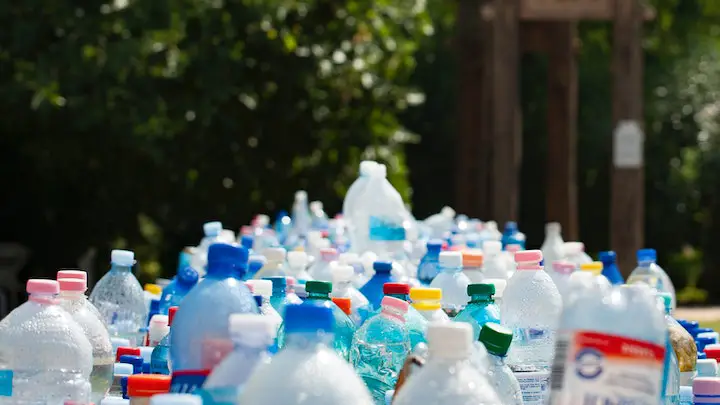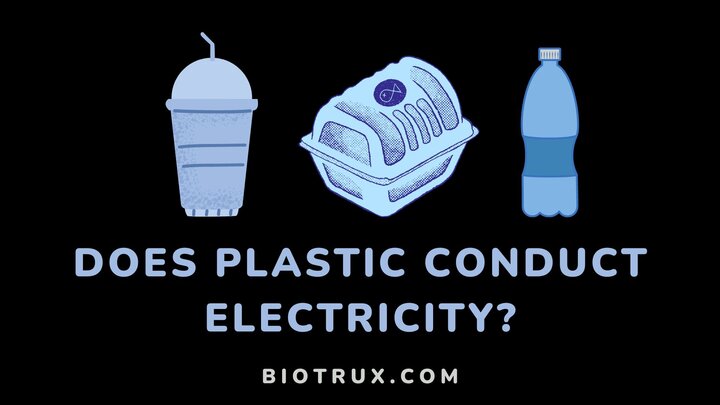Plastic is not a conductor and will not conduct electricity on its own. This is why they are mostly used as a coating for electrical devices or anything that can conduct electricity.
However, there are instances where plastics can conduct electricity. This discovery requires exposure to metal plates, so it is safe to say the plastic (alone) is not responsible for the conduction.
Moving forward, I will be explaining why plastics do not conduct electricity naturally, how they can become conductors, their thermal conductivity, and their uses.
Is Plastic a Conductor or an Insulator?

Plastic is an insulator. It is purely organic and contains carbon atoms, sulfur, oxygen, and nitrogen united by a strong covalent bond.
A covalent bond involves sharing one or more electrons between two atoms. As a result, it is difficult for electrons to move freely within plastics.
Nevertheless, plastic can conduct electricity if its polymer mixes with a thin film of metal (like iodine) in the presence of an ion beam.
Examples of conductive plastics include PEEK (polyetheretherketone) and acetal.
Why Plastic Does Not Conduct Electricity
Plastics do not conduct electricity naturally because it has low electrical conductivity and high electrical resistivity.
Electrical conductivity is the measure of how much electricity is flowing through a material. Unlike metals, the electrical conductivity of plastics is minimal (10-1 for hard rubber).
Electrical resistivity, on the other hand, opposes conductivity. It is the measure of how much a material can restrict the free flow of electrons within itself.
The resistivity level in most plastics ranges from 12 × 1015 to 16 × 1015. It is measured in Ohm-meter using the formula:
ρ = R A / L
Where:
- ρ = resistivity
- R = resistance (in Ohms)
- A = cross-sectional area (in square meters)
- L = length of the material (in meters)
Do Plastics Conduct Heat?
Plastics are bad conductors of heat. Their thermal conductivity usually ranges between 0.10 to 0.52.
The thermal conductivity of plastic is measured in Wm/K (Watts/meter-Kelvin) and is calculated using this formula:
K = (QL) / (AΔT)
Where:
- K = thermal conductivity
- Q = amount of heat through the material (in Joules per second or Watts)
- L = length between the two isothermal planes (in meters)
- A = area of the surface (in square meters)
- ΔT = change in temperature (in Kelvin)
Factors Affecting the Thermal Conductivity of Plastic
1. Density
Density is directly proportional to thermal conductivity. In other words, the higher the density, the greater the thermal conductivity of plastics, and vice versa.
2. Moisture
Although the thermal conductivity of plastics is low, when exposed to moisture, it increases. This is because the stable ions in the polymer get a little bit of freedom.
3. Breakdown voltage
Breakdown voltage is the voltage required to transform an insulator into a conductor. When plastics get exposed to a very high vintage, they lose all their insulating properties.
Consequently, industries that engage in high-voltage activities do not use plastics because they are more suitable for homes or other low-voltage environments.
4. Temperature
Temperature is also directly proportional to thermal conductivity. In other words, the higher the temperature, the greater the thermal conductivity of plastic, and vice versa.
Uses of Plastics as Insulators and Conductors
Plastic has a variety of uses either as a conductor or an insulator:
- They serve as insulating material for electric wires, sockets, and plugs.
- They are used to trap heat in cutleries and kitchenware
- Plastics play a huge role in the manufacturing of phone covers or accessories.
- Conductive plastics feature heavily in protecting electronic devices such as computers, laptops, and smartphones from the effect of electromagnetic interference.
- Most solar cells and medical equipment also feature conductive plastics.
FAQs
Is plastic more conductive than glass?
Plastic and glass share similar thermal conductive abilities as insulators.
What is a better insulator than plastic?
Porcelain is a better insulator than plastic.
It is a thin and dense material produced from clay and stony substances.
Is rubber electrically conductive?
Rubber is not electrically conductive; it is an insulator.
This is because its electrons are extremely stable or do not move freely to allow conduction.
Conclusion
Plastic is a poor conductor of electricity because of its closely connected polymers and few ionic elements. To make them conductive, they must be combined with a thin sheet of metal.
Hence, insulating plastics are ideal for electrical wires and plugs. On the other hand, their conductive counterpart (like acetal and PEEK), mostly feature in laptops, phones, and solar cells.
I hope you found this article helpful. Perhaps you would like to discover other natural insulators with conduction tendencies, please see if wood conducts electricity.
Thanks for reading.

